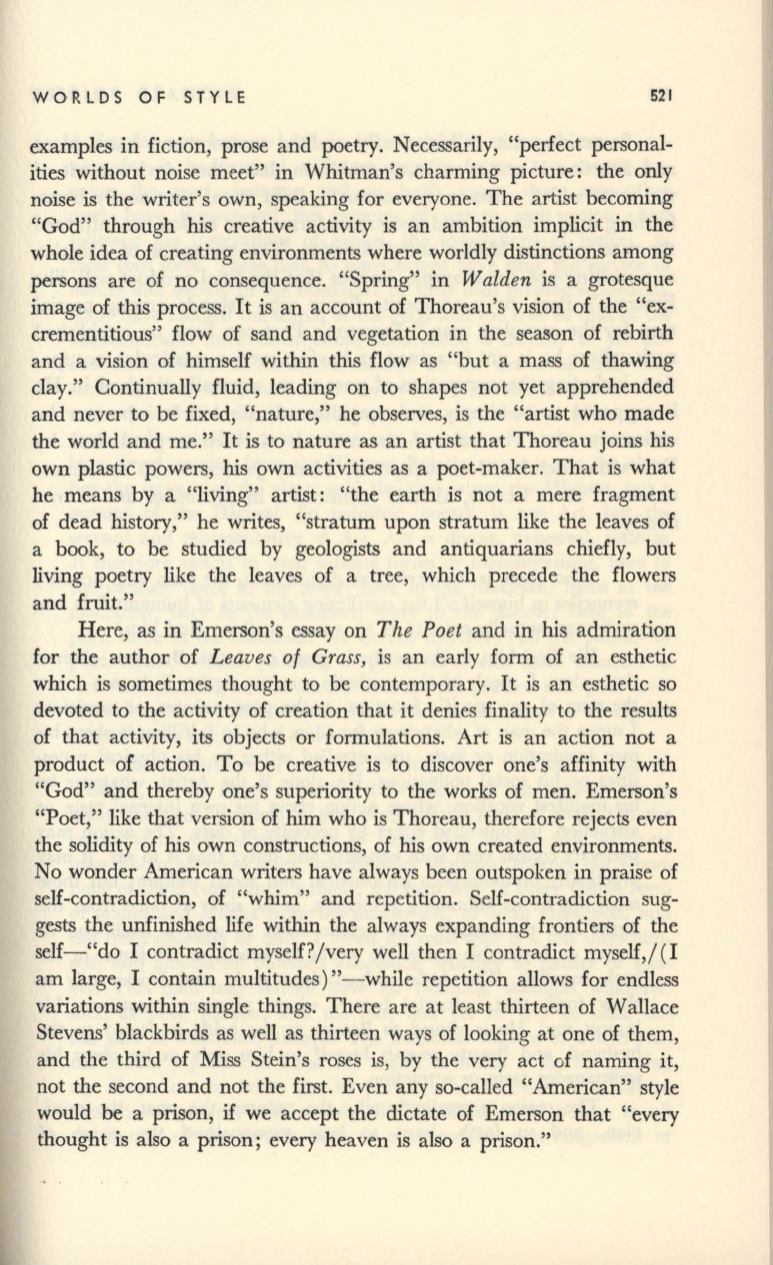
WORLDS OF STYLE
521
examples in fiction, prose and poetry. Necessarily, "perfect personal–
ities without noise meet" in Whitman's charming picture: the only
noise is the writer's own, speaking for everyone. The artist becoming
"God" through his creative activity is an ambition implicit in the
whole idea of creating environments where worldly distinctions among
persons are of no consequence. "Spring" in
Walden
is a grotesque
image of this process.
It
is an account of Thoreau's vision of the "ex–
crementitious" flow of sand and vegetation in the season of rebirth
and a vision of himself within this flow as "but a mass of thawing
clay." Continually fluid, leading on to shapes not yet apprehended
and never to be fixed, "nature," he observes, is the "artist who made
the world and me."
It
is to nature as an artist that Thoreau joins his
own plastic powers, his own activities as a poet-maker. That is what
he means by a "living" artist: "the earth is not a mere fragment
of dead history," he writes, "stratum upon stratum like the leaves of
a book, to be studied by geologists and antiquarians chiefly, but
living poetry like the leaves of a tree, which precede the flowers
and fruit."
Here, as in Emerson's essay on
The Poet
and in his admiration
for the author of
Leaves of Grass,
is an early form of an esthetic
which is sometimes thought to be contemporary. It is an esthetic so
devoted to the activity of creation that it denies finality to the results
of that activity, its objects or formulations. Art is an action not a
product of action. To be creative is to discover one's affinity with
"God" and thereby one's superiority to the works of men. Emerson's
"Poet," like that version of him who is Thoreau, therefore rejects even
the solidity of his own constructions, of his own created environments.
No wonder American writers have always been outspoken in praise of
self-contradiction, of "whim" and repetition. Self-contradiction sug–
gests the unfinished life within the always expanding frontiers of the
self-"do I contradict myself?Ivery well then I contradict myself,/ (I
am large, I contain multitudes)"-while repetition allows for endless
variations within single things. There are at least thirteen of Wallace
Stevens' blackbirds as well as thirteen ways of looking at one of them,
and the third of Miss Stein's roses is, by the very act of naming it,
not the second and not the first. Even any so-called "American" style
would
be
a prison,
if
we accept the dictate of Emerson that "every
thought is also a prison; every heaven is also a prison."


